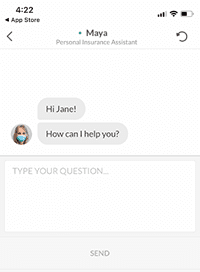Four Ways Insurance Companies Can Improve Customer Experience
Discover the four ways how insurance companies can improve customer experience.

During the first half of 2020, Australia has had to endure multiple crises. From bushfires, to floods and now the global pandemic of COVID-19 – as a result, insurance companies across health, automotive and housing are seeing new customers as recent events encourage people to seek insurance.
A first-time insurance buyer’s experience is very different from other industries (such as retail), as consumers seeking insurance typically make at least three visits to a site before purchasing. Insurance providers must ensure they’re providing a seamless customer experience from the moment they land on a brand’s page. So how can this be done?
Picking an insurance provider is no impulse buy. It’s a thorough, well-thought out decision where consumers take their time to consider the options before purchasing. However, don’t confuse this for patience; if the consumer can’t find the answers they’re looking for quickly, they won’t hesitate to look elsewhere.
1. Get It Right From the First Interaction
 The first interaction with a potential customer is important for a number of reasons. Firstly, insurance is a personal investment and customer’s purchase decision is often determined by their familiarity and trust of that brand. This trust can be measured by how helpful they find the organization, if they can rely on them for information and more. Secondly, it’s common for consumers to have a lot of questions about insurance; websites and search functions need to be built to cater for this—this can be done by including functions such as live chat, contact forms, FAQ pages and more. Don’t miss out on engaged customers who are ready to buy because your website isn’t able to provide the answers and support they need.
The first interaction with a potential customer is important for a number of reasons. Firstly, insurance is a personal investment and customer’s purchase decision is often determined by their familiarity and trust of that brand. This trust can be measured by how helpful they find the organization, if they can rely on them for information and more. Secondly, it’s common for consumers to have a lot of questions about insurance; websites and search functions need to be built to cater for this—this can be done by including functions such as live chat, contact forms, FAQ pages and more. Don’t miss out on engaged customers who are ready to buy because your website isn’t able to provide the answers and support they need.
Consumers typically don’t interact regularly with insurance providers, outside of their initial research and purchase. Generally, they look for the kind of insurance that lets them purchase and forget about it—a peace of mind transaction. In fact, 90 per cent of worldwide insurers can go 12 months without communicating with customers. For this reason, it’s essential insurance brands are nailing that first customer interaction.
2. Understand Their Language in the Search Bar
Consumers seeking insurance aren’t professionals in the field and the search bar needs to be mindful of this. Using industry jargon hinders searchers from finding the answers they’re after and can frustrate potential customers. Broaden the terms in your search function to reflect how customers are searching. Know how they speak in the search bar and train the AI to learn this language so it can return relevant search suggestions. Making search too literal can be a time waster for everyone involved, from the consumer to the customer support team who has to field their questions later.
For example, the consumer might know they’re in the market for health insurance but not know what the type of cover they’re after is called. An organization’s search must be able to understand “health insurance for 22 year old male” and return helpful, relevant results. It’s no use if it comes back with a 404 error page or shows results for heart surgery and pregnancy cover. It’s crucial that a brand’s search function can translate keywords into relevant suggestions.
3. Know the Time and Place for Selling or Servicing
Once an insurance purchase has been made, it’s rare for the customer to come back for another one in the coming weeks. The industry is vastly different from other sectors, such as retail where the customer will buy a skirt, then come back a few weeks later for a matching top. Typically, insurance is an all-inclusive one-off decision that keeps the customer from having to revisit the topic for at least a year. For this reason, it’s important to use a recommendation engine and apply machine learning to put relevant and timely information forward. Search results for existing customers should reflect each person’s unique journey and provide FAQs or links to access their account, not the best deal for new customers.
4. Know When and Where to Invest
Chatbots and AI-powered virtual assistants are great tools to enhance customer experience. They provide helpful information quickly and keep the customer from having to flick between multiple pages on a website. However, brands must be sure to only use this technology to augment human customer service agents and use it as part of a broader customer experience. All too often, brands make it difficult to contact a real person, leaving customers frustrated, causing them to abandon their session on site.

Insurance is an important purchase for everyone, and consumers expect websites to be equipped to answer their questions, providing them with all the relevant information. In such a competitive field, an informative website and search function can be the difference between securing a life-long customer and letting them slip to a competitor. Customer experience is everything and by making the right technology investments, brands can gain a serious competitive advantage; don’t miss out by being behind the times.
The original version of this article can be found at Global Banking & Finance Review.
LEARN MORE
Contact us today to learn how Lucidworks can help your team create powerful search and discovery applications for your customers and employees.
